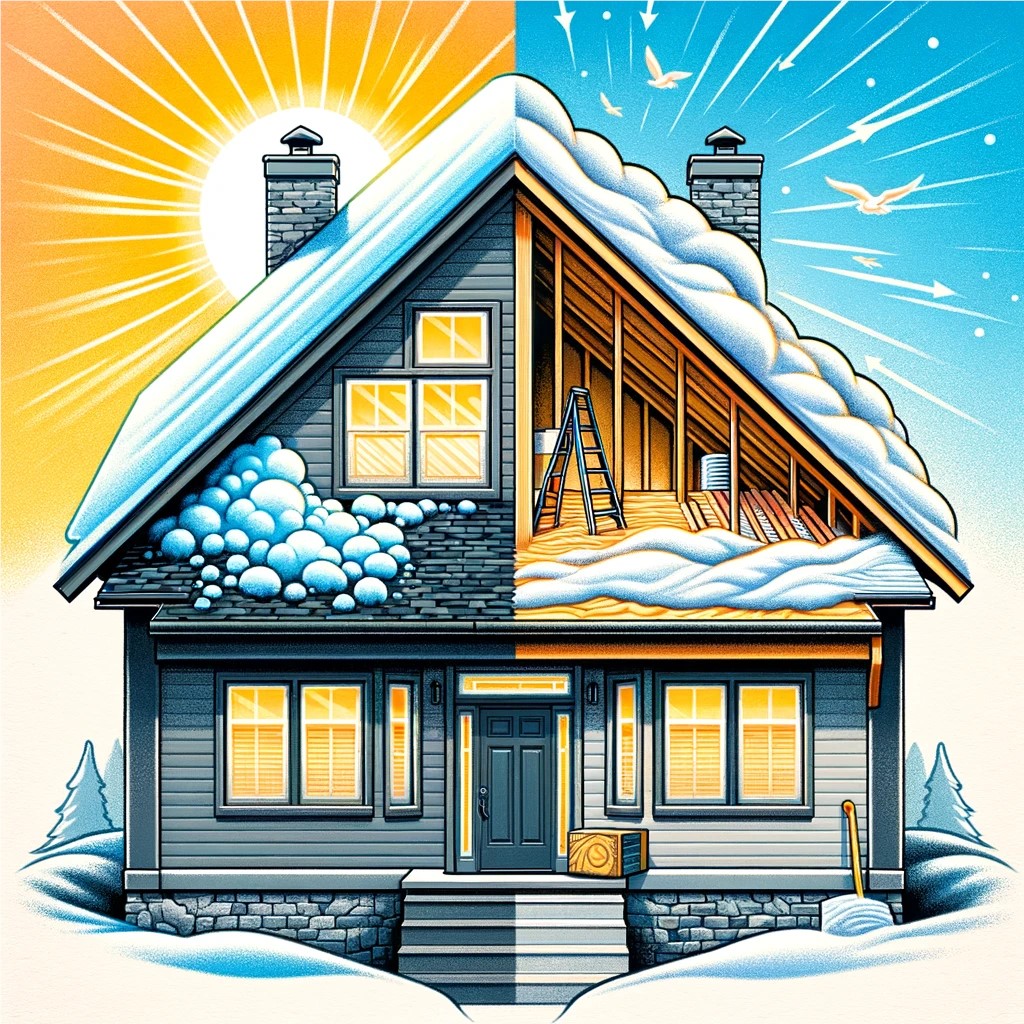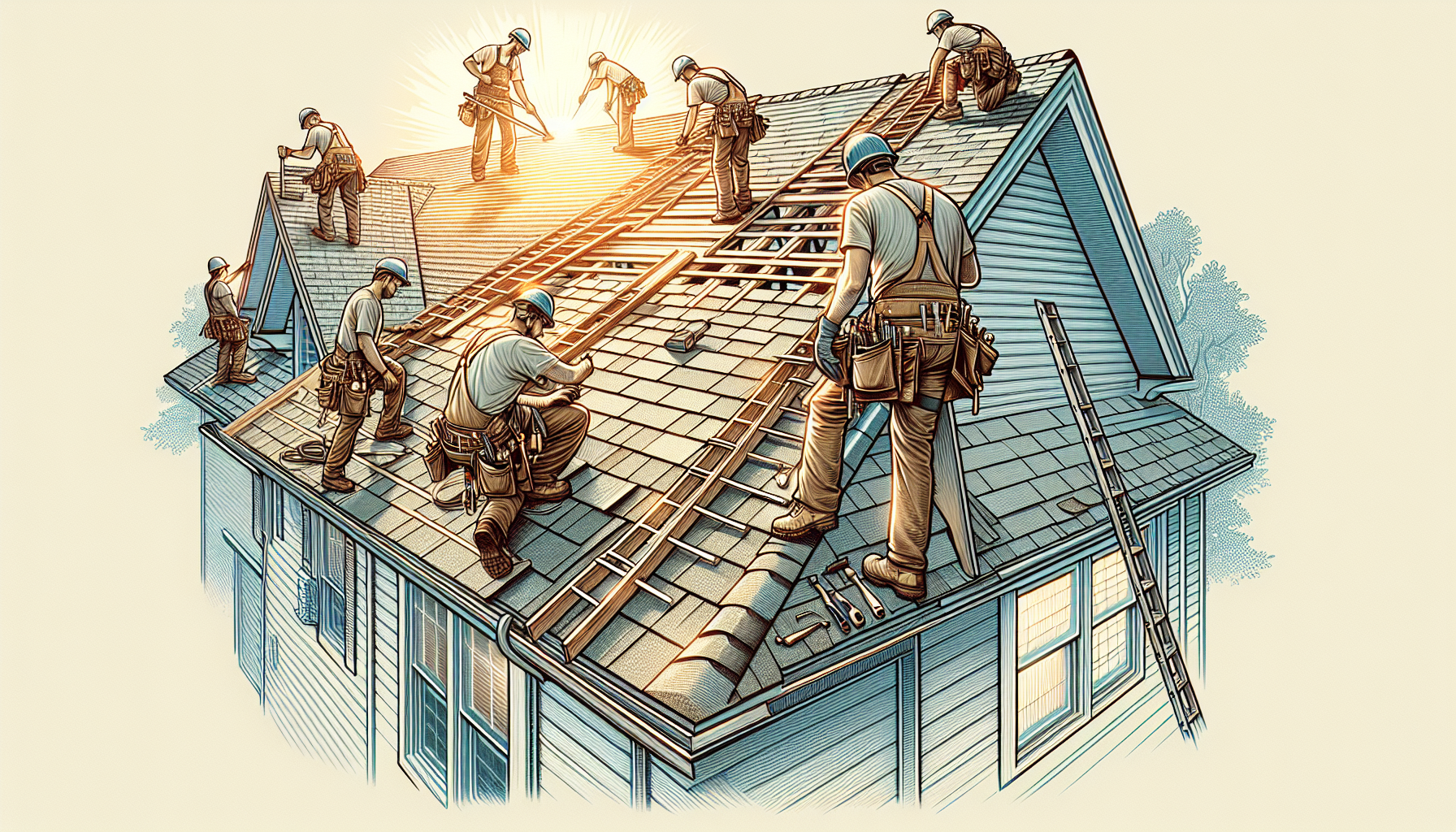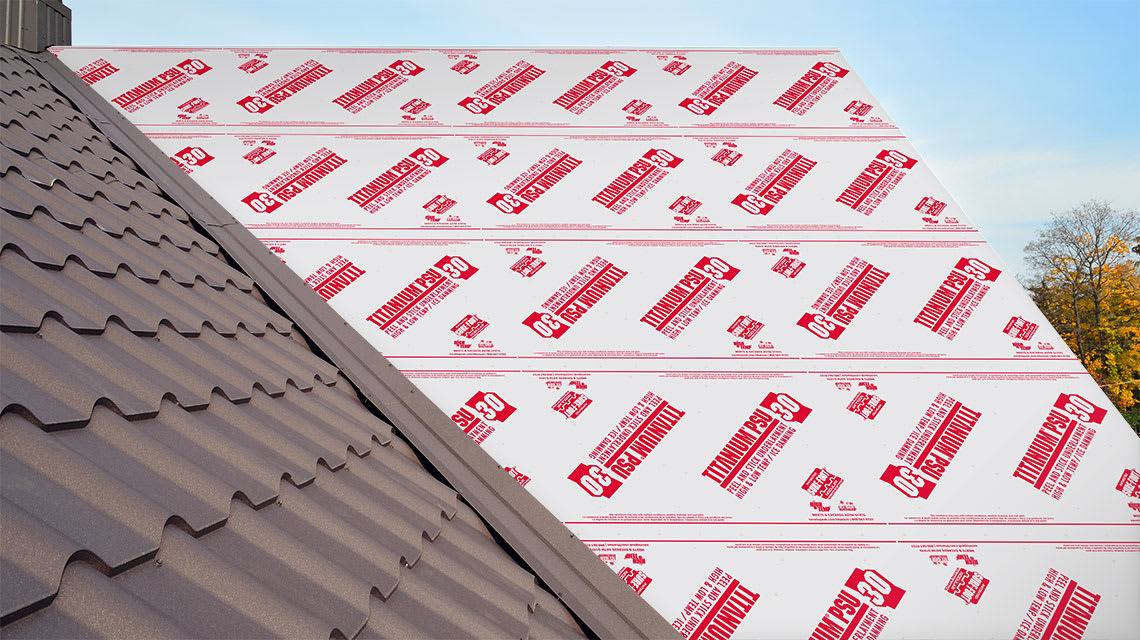
Maximizing Roof Longevity in Idaho: A Guide
Idaho weather is crazy. January 2024 had us go through near-record-setting snowfall and just 3 weeks later up to 50 degrees. Hot summers to snow-filled winters aren’t the kindest thing you can put a roof through. Understanding what you can do to lengthen the life of your roof is something that can help you stretch the life of your roof and help avoid costly repairs. This is a guide to help you understand how different roofing materials fare in Idaho's unique weather conditions and touches on what you can do to make a roof last.
Detailed Overview of Roofing Materials - Lifespans and Choices
- Architectural Shingles: Offering a balance between aesthetic appeal and durability, architectural shingles are a favored choice in Idaho, boasting a lifespan of 30–50 years. Within the realm of Asphalt shingles, this is the preferred choice for Idahoans. They certainly fare better than….
- Three-tab Asphalt Shingles: These economical options are less durable, typically lasting 10–15 years at most, and are suitable for those with budget constraints. These are shingles you can do an “overlay” (adding an additional layer of shingles over the original layer) because they lay flat on the roof.
- Clay Tiles: Celebrated for their durability, clay tiles can last over 50 years, making them an OK choice for long-term roofing solutions in Idaho. Disadvantages are high costs for repairs and leaks. Several customers we’ve helped have opted to get rid of their clay roofs because of high repair costs.
- Composite Shingles: With a lifespan of 40–50 years, composite shingles combine the aesthetic qualities of natural materials (wood shake) with the longevity of synthetic options. Will your HOA approve it? That’s a question to ask.
- Concrete Tiles: Similar to clay tiles in durability, concrete tiles offer a lifespan of 50+ years and provide a robust roofing solution. Also, repair costs are high. Not a roofing solution we often see here in Idaho.
- Metal Roofing: The lifespan of metal roofing can vary widely from 40 to 70 years, influenced by the metal type and quality, making it a versatile choice for Idaho homeowners. If it’s within your budget, this is what we consider the only option that’s better than Architectural Shingles. It’s certainly the roof of choice for places like Payette, McCall, Pine, and Cascade where there’s a lot of snowfall.
- Slate Tiles: Known for their exceptional longevity, often exceeding 50 years, slate tiles are a premium roofing option that requires minimal maintenance. Sure you’ll get an occasional repair that’s costly, but the roofs look awesome.
- Wood Shakes: Wood shakes provide a rustic aesthetic and durability of 40–50 years but require more maintenance compared to other materials. Wood shakes are typically sawn on one side and hand split on the other side. This makes wood shakes noticeably thicker than wood shingles which offer a slightly shorter lifespan of 25–30 years.
Factors Affecting Lifespan
- Climate: Idaho's extreme weather, from hot summers to cold winters, can cause roofing materials to expand and contract, shortening their lifespan over many seasons.
- Roof Color: Darker roofs absorb more heat, which can accelerate aging, while lighter roofs reflect sunlight, potentially extending the roof's lifespan.
- Underlayment Quality: The underlayment is crucial for protecting the roof from water damage. High-quality materials like those from Owens Corning can significantly enhance durability when compared to the cheap felt paper that is water absorbent. Don’t skimp out on the Ice and Water barrier, you’ll thank yourself later.
- Installation Workmanship: The skill and experience of the roofing contractor play a critical role in the roof's longevity. Poor installation can lead to numerous problems, including leaks and premature aging. It’s a real bummer when someone pays for a roof and then has to pay for a repair on that same roof just because of poor workmanship.
- Roof Slope: The slope affects how well a roof can shed water and snow. Steeper slopes generally lead to longer roof lifespans by preventing water and snow accumulation.
- Ventilation: Proper ventilation is essential for preventing heat and moisture buildup in the attic, which can deteriorate roofing materials over time. Adhering to ventilation guidelines from reputable sources like Owens Corning can extend the life of your roof. As a general rule, your attic temperature should be no more than a 20-degree difference from the outside temperature. Sometimes people think there is a leak in their roof, but it's actually water accumulating from condensation because the attic temperature is drastically different from the outside temperature. Think of a soda can when you take it out of the fridge and how it starts to “sweat”.
Deep Dive into Roof Maintenance and Care
Regular maintenance is key to extending the life of your roof. We perform free inspections. Many of our previous customers have us come to inspect their roofs every year or every other year. You’re invited to call us to have us inspect your roof. Let’s dive into some maintenance and care tips.
- Frequent Inspections: Professional inspections can identify and address minor issues before small repairs turn into costly repairs.
- Gutter Maintenance: Keeping gutters clean prevents water overflow, which can damage the roof, siding, and foundation of your home. Time and again, the investment in gutters has proven to have a positive return on investment from damage abatement.
- Debris Removal: Removing leaves, branches, and other debris from your roof can prevent moisture retention and damage. Just be very careful if you have a steep roof or an older roof. Call us and we’d be happy to help.
- Prompt Repairs: Addressing damage immediately prevents minor issues from turning into major problems. Don’t try and squeeze another year out of your roof if you have a small issue, it can compound over time.
- Ventilation Checks: In Idaho, the single biggest reason roofs do not last as long as expected is because of improper ventilation. Sometimes the insulation contractors block the soffit vents. Other times the Home Builder just cut costs and forced the roofing company to cut corners on ventilation. Ensuring your attic is well-ventilated can prevent damage caused by heat and moisture buildup. Your attic should have no more than a 20-degree difference from the outside ambient temperature.
Proactive Measures for Roof Longevity
In addition to regular maintenance, taking proactive steps can further enhance your roof's lifespan:
- Choosing the Right Materials: Selecting materials suited to Idaho's climate and your specific roofing needs can make a significant difference in longevity. The Owens Corning Duration shingle is our go-to shingle for Idaho Homes.
- Professional Installation: Hiring a reputable and experienced contractor ensures your roof is installed correctly, reducing the risk of future issues. We are the only locally owned and operated Owens Corning Platinum Contractor in Idaho. We earned that right through years of doing the right thing for our neighbors and community. Picking the right roofer that won’t cut corners is the single best thing you could do for your roof.
- Regular Maintenance: Setting up a schedule for routine maintenance and/or inspection can help keep your roof in top condition.
- Timely Upgrades: Consider upgrades, such as improved ventilation systems like a solar attic fan, or adding gutters on all your eves.
In conclusion, the longevity of a roof in Idaho is influenced by a complex interplay of factors, from material choice and climate to installation quality and maintenance practices. By making informed decisions about materials, ensuring high-quality installation, and adhering to a regular maintenance schedule, homeowners in Idaho can maximize the lifespan and performance of their roofing systems. At Idaho Roofing Contractors, we are committed to providing top-notch materials and services, ensuring that every roof we work on is built to last, offering homeowners peace of mind and lasting protection against Idaho's harsh weather conditions.
Subscribe to Idaho Roofing Contractors's Blog








Comments